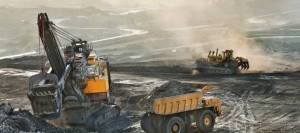[:en] [by Christine Shearer, Nicole Ghio, Lauri Myllyvirta, and Ted Nace on action.sierraclub.org] From 2005 to 2012, worldwide coal-fired generating capacity boomed, growing at three times the previous pace. The increase in the global coal fleet was twice the size of the entire existing U.S. coal fleet. That boom is now busting. In India, projects shelved or cancelled since 2012 outnumber project completions by six to one, and new construction initiations are at a near-standstill. In both Europe and the U.S., the coal fleet is shrinking, with retirements outnumbering new plants. China faces a looming glut in coal-fired generating capacity, with plant utilization rates at a 35-year low.
[by Christine Shearer, Nicole Ghio, Lauri Myllyvirta, and Ted Nace on action.sierraclub.org] From 2005 to 2012, worldwide coal-fired generating capacity boomed, growing at three times the previous pace. The increase in the global coal fleet was twice the size of the entire existing U.S. coal fleet. That boom is now busting. In India, projects shelved or cancelled since 2012 outnumber project completions by six to one, and new construction initiations are at a near-standstill. In both Europe and the U.S., the coal fleet is shrinking, with retirements outnumbering new plants. China faces a looming glut in coal-fired generating capacity, with plant utilization rates at a 35-year low.
Bad news for coal builders is good news for the climate and public health. Because coal is the most carbon-intensive fossil fuel and coal plants have a long lifespan, growth in coal capacity has major implications for climate stability. In addition to its effect on climate, pollution from coal combustion is responsible for an estimated 800,000 premature deaths each year.
This report provides the results of a worldwide survey completed in January 2015 by the Global Coal Plant Tracker. It includes the following conclusions:
- Boom is turning to bust. After a period of extraordinary growth, worldwide coal plant construction has slowed rapidly due to increasingly effective citizen opposition, competition from renewables, and economic restructuring. Since 2010, two plants have been shelved or cancelled worldwide for every plant completed. In Europe, South Asia, Latin America, and Africa, the failure-tocompletion rate is 4:1 or higher. The amount of new coal-fired generating capacity in the proposal pipeline worldwide dropped from 1,401 GW in 2012 to 1,080 GW in 2014, a 23 percent decline.
- The proposed coal plant pipeline remains highly dangerous. Even if the trend of two coal plant proposals halted for every one plant built continues, the remaining one-third will use up nearly all of the available carbon budget for avoiding the internationally recognized 2°C warming threshold. Stronger efforts are needed to curb new coal capacity.
- China faces a capacity glut. In 2014, China recorded a 1.6 percent decline in power generation from coal, and the overall utilization rate for thermal plants declined to 54 percent, the lowest level in over three decades. Although coal capacity additions fell by half from 2006 to 2014, China needs to cancel more proposed coal plants to avoid large amounts of stranded or underutilized coalfired capacity.
- India’s coal boom has withered. Grassroots citizen opposition, coal supply issues, and other problems have caused financing for new coal plants to dry up. Although 69 GW of capacity is still under construction due to a surge in construction starts prior to 2012, less than 10 GW of new construction has started since mid-2012. For every project completed in India since mid-2012, six projects have been shelved or cancelled. Nevertheless, approximately 300 GW of capacity remains in planning, a potentially dangerous carbon bomb.
- In the United States and the European Union, coal capacity continues a long-term decline. From 2003 to 2014, the amount of coal-fired generating capacity retired in the US and the EU exceeded new capacity by 22 percent. With most new capacity plans halted and large amounts of capacity slated for retirement, reductions in coal capacity are expected to accelerate.
- Some countries are defying the slowdown. Concentrations of proposed new coal-fired generating capacity can still be found in Turkey, Vietnam, Indonesia, Poland, and the Balkans.
The Global Coal Plant Tracker identifies, maps, describes, and categorizes every known coal-fired generating unit proposed since January 1, 2010. Developed by the research group CoalSwarm, the tracker uses public sources to document each plant and is designed to support longitudinal monitoring.
“Boom and Bust tracking the global coal plant pipeline” can be downloaded here[:]
